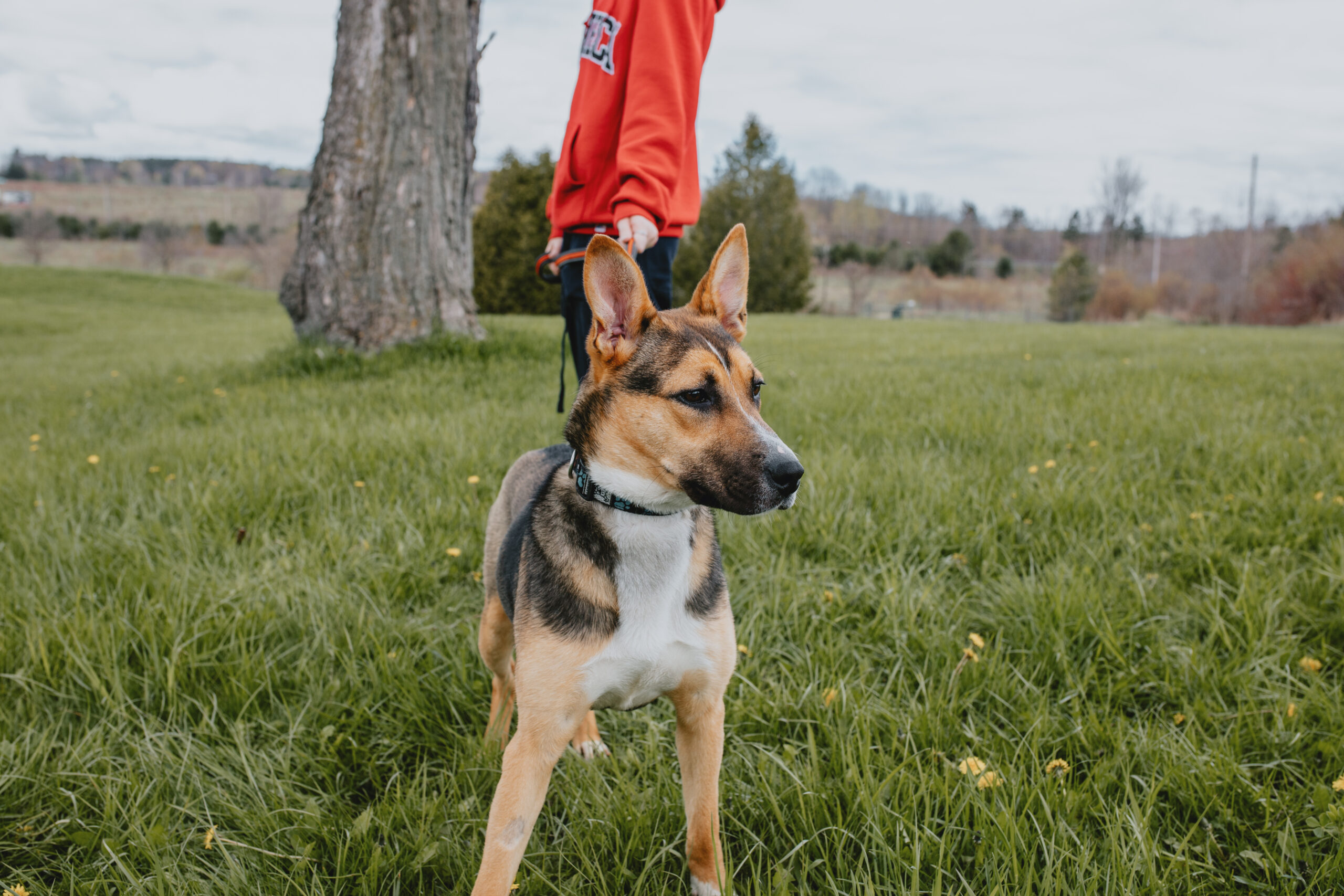Pandemic puppies: Adult dog socialization tips
by Ontario SPCA and Humane Society | Dog Care | August 10, 2023

The first three months of a puppy’s life are important to its development as during this time, they are learning, going through a critical period of socialization and accepting new things. But what do you do if that window of opportunity is missed? Many puppies born during the pandemic were under-socialized due to social distancing and sheltering in place. Today we’d like to share tips for socializing your adult dog.
Why is socialization important?
Early socialization builds well-rounded, and emotionally healthy dogs. Without it, puppies can grow into fearful, and insecure dogs that lack confidence in unfamiliar or new situations.
Gently exposing dogs to a wide variety of new people, places, animals, objects, sounds, and smells builds coping skills and the ability to deal with stress from new situations.
Pandemic puppies are now post-pandemic teenagers in need of socialization to get them back on track to becoming confident dogs who can adapt to new and diverse situations. So, how do you get there?
Setting your dog up for success
Exploring the world should be fun; don’t forget to encourage your dog’s curiosity and reward them with praise, and high value treats! Even a baby step towards understanding that the mail carrier is a friend, not foe, deserves positive reinforcement.
Tips to help with socialization
Provide exposure to other dogs
Playing and exploring with other dogs is important. These experiences will allow your dog to engage with and observe the actions of other dogs.
- Take a walk to a dog park. Remain outside of the park and let your dog watch the dogs play and experience the location, sights and smells.
- Find a credentialed dog school offering socialization classes for adult dogs.
- Have one-on-one playdates only with well-socialized dogs you know well, like the dog of a friend or a family member.
- As your dog grows in confidence, you can expose him to more environments and animals.
Stranger danger
The goal here is to help your dog feel comfortable with a variety of different people they may encounter in your home, walking down the street, or at the park. Meetings with new people should include all ages and cultural backgrounds, men with facial hair, people wearing hoods, hats or sunglasses, uniforms, as well as people using mobility devices like wheelchairs, canes or crutches.
- If your dog has a particular dislike for people in uniform, take proactive measures such as providing your mail carrier with your dog’s favourite treat and asking them to give one to your dog once they have achieved a calm sit.
- Sit outside with your dog and watch their reaction to foot traffic, bikes, scooters, skateboards or people with strollers. Do the same with cars, buses, and motorcycles. Provide rewards when they react calmly to reinforce this behaviour.
- Walk by a seniors’ home parking lot to expose the dog to seniors and mobility devices. If the dog is curious and the senior allows, let the dog sniff the mobility devices.
Make some noise
Exposure to different noise is critical for dogs, as a startling experience with noise can trigger fear-based behaviour and endanger the animal. While in training, watch that the level of noise is not frightening to your dog. If it is, turn down the volume or find a similar but less frightening noise.
- Desensitize your dog to fireworks with dog training sound apps for your phone. Play on a low volume frequently to begin with and gradually increase the sound.
- Floor buzzers that sound when a dog touches them creates a game that the puppy controls. This is a helpful tool in desensitizing your dog!
New places
New places and social situations expose dogs to people and items they might not see on a regular basis.
- Visit the veterinarian office well in advance of an appointment. Allow your dog to explore and practice a sit on the scale. Ask staff to reward your dog with treats and praise.
- Visit a pet store during off peak hours, building up to a visit on a busy Saturday.
- Walking routes become stale to your dog. Alternate walking routes to stimulate your dog’s mind with new sights and smells.
Never push your dog to conquer a fear. It’s important to remain patient as socialization is a long process. Provide reassurance and praise to celebrate their progress. It’s never too late to expose your dog to new environments, people, and things. With some positive reinforcement, your dog can adjust to the new world they’re living in!
If you or your dog are struggling with socialization, seek the help of a professional trainer.
Categories
Testimonial
Totally rock
All of your wonderful staff & volunteers totally rock. The amazing compassion and work you provide on a daily basis is incredible.